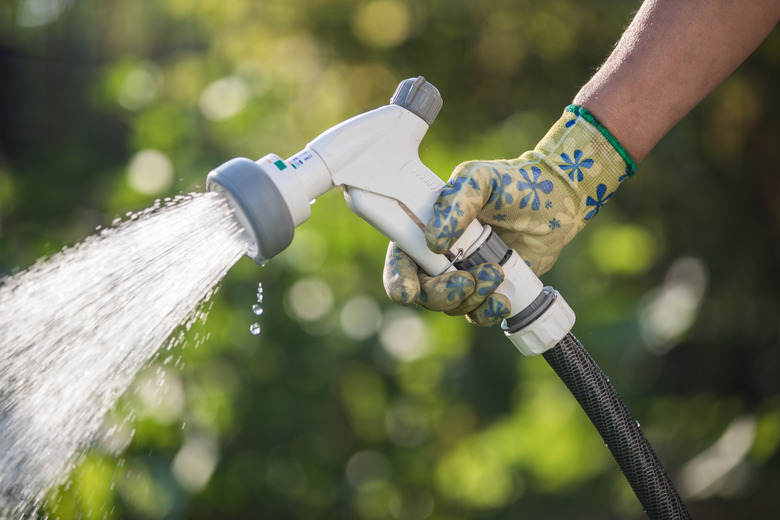How To Increase The Water Pressure In A Garden Hose
Even kids know a simple trick for increasing garden hose water pressure: Simply cover the end of the hose with your thumb. This reduces the aperture size, forcing water to back up in the hose and increasing the reach of the spray. Gardeners often use this trick when watering to reach plants in the back of the garden. A variation that's less tiring on the thumb is to screw a nozzle onto the hose and use it in the jet mode (if it's so equipped) or, if you use an adjustable nozzle, tighten it down to reduce the aperture size.
What do you do when neither of these tricks produces enough extra pressure for your needs? There is one more trick to increase water pressure in a hose, but if the water system has low pressure, the best strategy may be to increase it with an outdoor water pressure booster.
Eliminate Leaks and Kinks
It goes without saying that losing water through leaks is going to reduce the overall pressure in the hose, so the first thing to do is check the hose connections to make sure they're tight and no water sprays from any of them. You should also check the hose itself for tiny sprays of water that indicate pinhole leaks. If you see any leaks in your hose, you can cut out the damaged section and use a hose mender to repair the cut.
Kinking is another common cause of low pressure, and some kinks aren't obvious, so it pays to check the entire hose. Sometimes, a bend or twist in the hose can restrict flow even if it isn't an actual kink. Pay special attention to parts of the hose that wrap around trees or other obstructions.
Use a Different Type of Hose
Along with using your thumb or a nozzle, the other trick you can try to increase water pressure is to replace the hose you're using with an expandable garden hose. An expandable hose is quite short and compact when it's empty, but its width and length double when the hose fills with water. The expanding hose material exerts a force on the water when it expands, and this actually increases the water pressure.
To get this pressure increase, you have to use a nozzle with the expanding hose. Turn the nozzle off, turn on the water, and wait a few seconds for the hose to fill with water. Begin watering when the hose reaches its maximum length. Because of the force the hose exerts on the water, you'll still have pressure even when you turn off the water, although this will gradually decrease as the hose empties.
Install an Outdoor Water Pressure Booster
None of the simple tricks will work if your water supply has very low pressure or the garden hose is connected to an unpressurized water tank. In this case, your best bet is to purchase an inline water pressure booster. This is a fairly inexpensive device (about $100) that plugs into a standard wall outlet. It has an inlet port for the water supply and an outlet port for the hose.
Many booster models are available, and the best one depends on how much extra pressure you need. Standard models will boost pressure to a range between about 25 and 45 psi, but you can also find models that will boost pressure as high as 70 psi, which is more than you need for most watering purposes. Some models have a safety shutoff that stops the pump when the pressure exceeds a certain value, which is a good feature to have.
